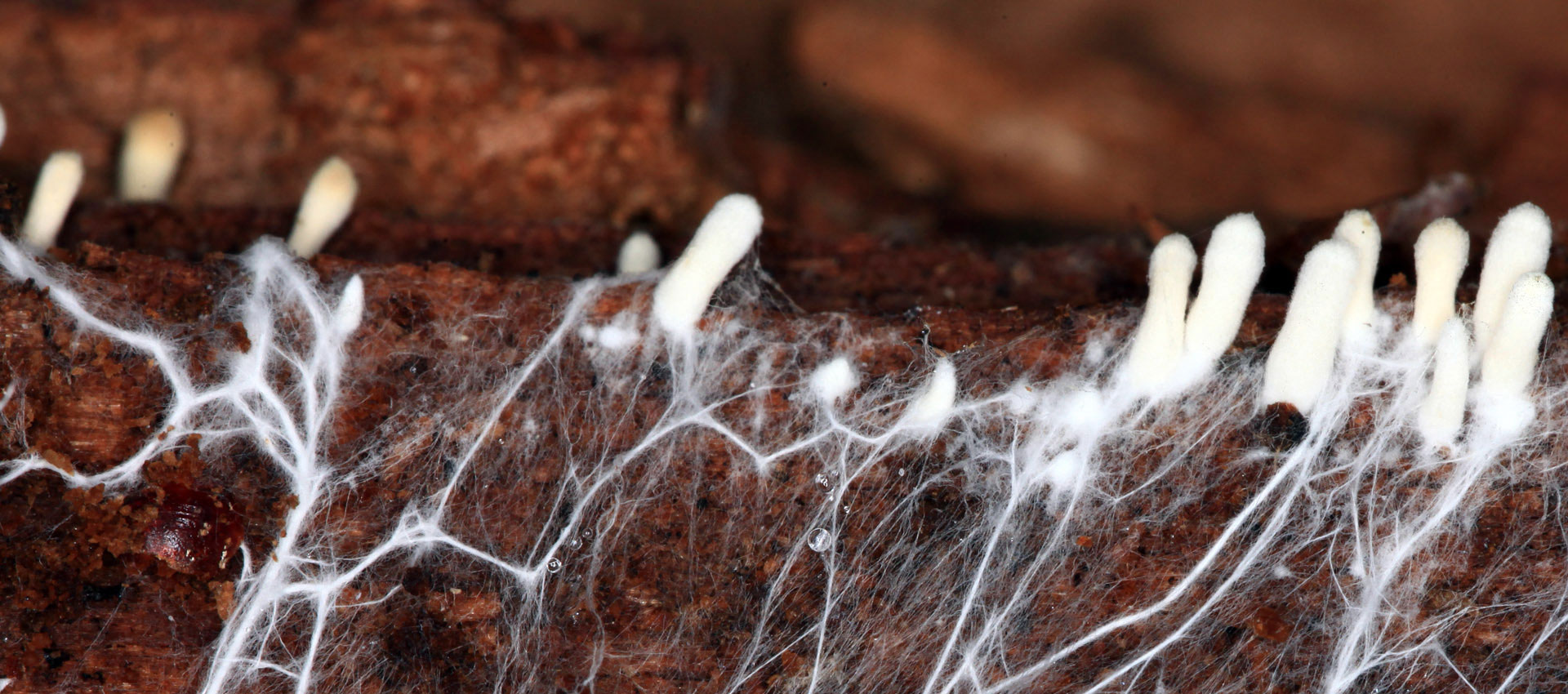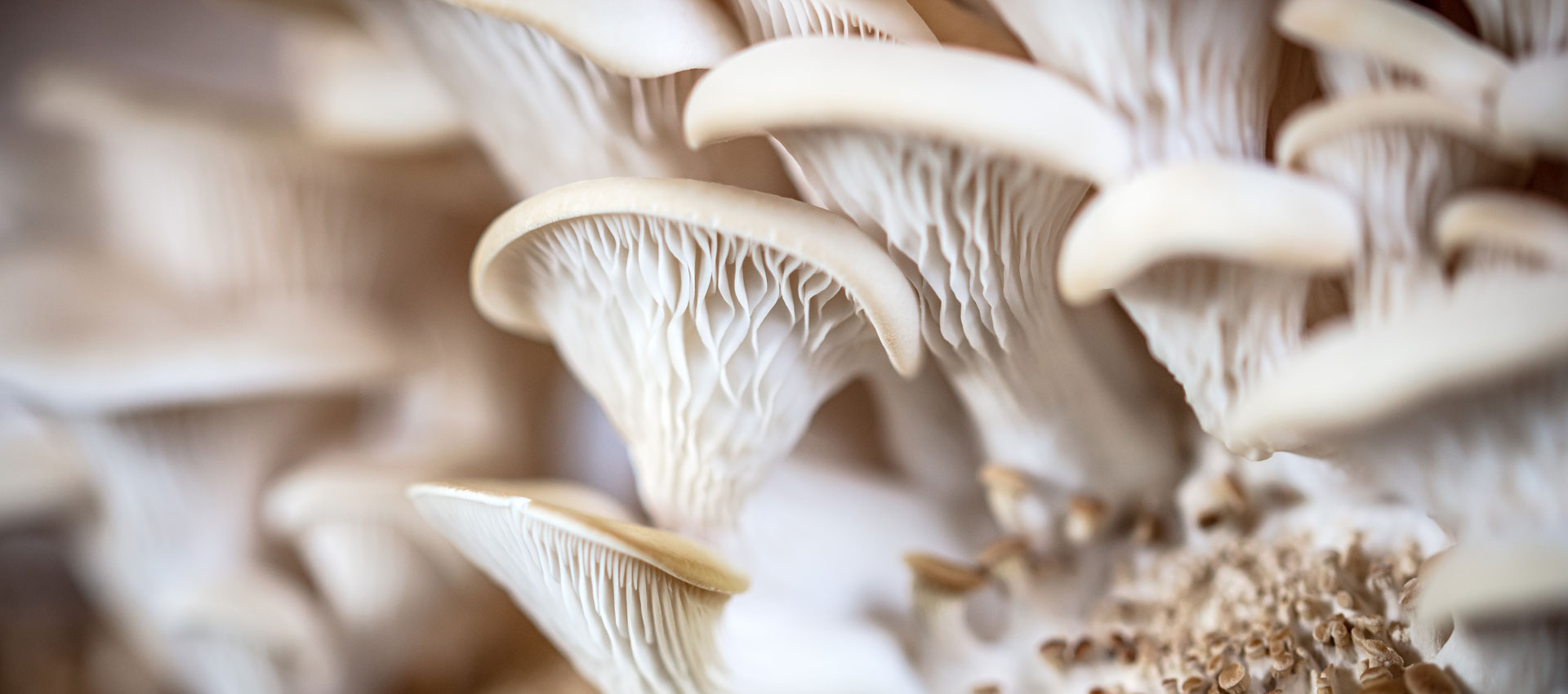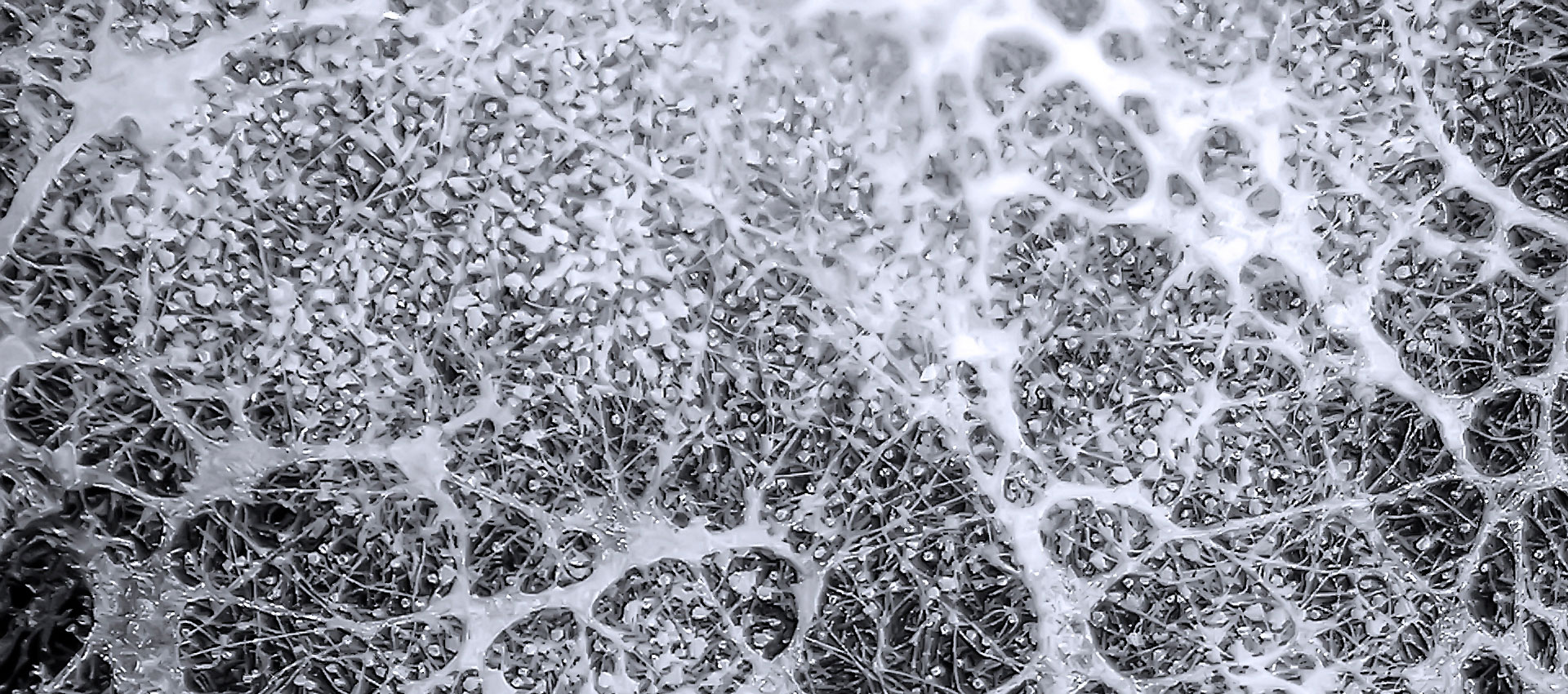BBC Earth newsletter
BBC Earth delivered direct to your inbox
Sign up to receive news, updates and exclusives from BBC Earth and related content from BBC Studios by email.
Plants
Five awe-inspiring innovations that will change how you look at mushrooms forever.
Sure, mushrooms taste delicious in an omelette, but prepare to be amazed by what else the world of phenomenal fungi can do. From revolutionising our wardrobes to helping us live in space, mushrooms have the ability to alter our lives forever – in fact, they’re already doing it.

As incredible as it might seem, the future of ecological fashion could lie with the humble mushroom. In just a few years’ time, it’s likely that the sustainability-conscious consumer will be able to buy a range of items made from mushrooms, from shoes to ‘leather’ jackets.
Some manufacturers are already producing wearable textiles made from fungi. As these are natural products, they are completely biodegradable. One such fabric is made from the cork-like skin of the Phellinus ellipsoideus (also known as Fomitiporia ellipsoidea),1 a large parasitic fungus that grows on the trunks of trees in subtropical forests in places such as the island of Hainan in China.2
Other manufacturers have gone underground to produce mushroom ‘leather’. The organism we see above the surface of the ground is the fruiting body of a larger structure called mycelium,3 a tight mass of tiny, tangled root-like filaments that spread beneath the soil, sometimes for miles. By cultivating webs of mycelia and feeding them bio-substrates such as cellulose, it is possible to control the thickness, size and shape of the web – thereby allowing manufacturers to grow a sustainable material that will eventually resemble animal leather in look and durability.4 Designer labels Stella McCartney and Hermés have already incorporated fabrics grown in this way into her recent collections.5

Scientists and companies alike are also researching ways in which mycelium can be used to produce sustainable, carbon-neutral building materials. By introducing mushroom spores to a confined space – for example, a brick mould – and adding organic matter such as straw or garden compost at room temperature, the mycelium web spreads to create a firmly meshed brick in just five days.6
In 2014, a group of young architects constructed a 12-metre (40-foot) high tower constructed of 10,000 mushroom bricks outside the Museum of Modern Art in New York.7 Although these bricks cannot carry much weight, this method can already be used to produce sustainable insulation and other non-weight bearing materials – with the added advantage that the mycelium can be grown into any shape. Other companies, including the London-based firm Biohm, are now researching how waste products from the building industry can be reused in conjunction with mycelium to create stronger construction products.8

Did you know that mushrooms can sing? OK, they don’t actually sing… but they can definitely be used to make music. All living things give off electrical impulses that can be interpreted as MIDI notes to be played on synthesisers or computers. Mushrooms are no different and musicians have found a way to use the electricity in them to create music.9
“I use the movement of water inside these plants as electrical resistance,” says musician Tarun Nayar, who takes his synthesisers out into the wilds of Canada to record the bioelectrical pulses in mushrooms he finds in old-growth forests. “When I plug circuit cables to them, even small changes in the said resistance due to the plant’s natural bioelectric charge manifest as notes of music”.10
Other musicians, such as Noah Kalos, grow their own mushrooms in controlled environments to create similar effects.11 In January 2021, Kalos – known online as MycoLyco – livestreamed a 37-minute ‘mushroom concert’, which translated the bioelectrical energy in a cluster of blue oyster mushrooms into a seamless stream of ethereally tuneful notes.12 The technology has become so popular that commercial companies now produce smaller use-at-home devices for musical novices who want to be able to explore this natural soundscape for themselves.

Some scientists are hopeful that mycoremediation – the process that harnesses a fungi!s natural ability to break down and neutralise even the most harmful of materials – holds the key to habitat regeneration in even the worst circumstances.13
In the 1990s, mycologist Paul Stamets discovered that oyster mushrooms had an astonishing capacity to consume and neutralise pollutants such as oil. In 1998, an experiment took place at the Washington State Department of Transportation maintenance yard, which was heavily contaminated with diesel fuel. The team treated three piles of earth, with a fourth used as a control site. One of the piles was covered with woodchips mixed with mycelium spores and then covered, one was treated with a bacterial culture, and the other with chemical fertilisers. A month later, the myceliated pile was alive with healthy mushrooms and the soil clean and sweet-smelling; the others were still horribly contaminated.14
Stamets describes fungi as a ‘gateway’ or ‘keystone’ species, because mushrooms attract insects, which attract birds, which deposit seeds, which then grow on the restored soil.15 Nine weeks after the start of the experiment, the formerly contaminated earth was thriving with life both plant and animal life.16
In 2021, the Skeena Watershed Conservation Coalition in British Columbia, Canada,17 embarked on a project to use fungi to break down railway sleepers coated with creosote, a chemical preservative shown to be toxic to humans and animals.18 The initiative is using native species including elm oyster mushroom (Hypsizygus ulmarius), turkey tail fungus (Trametes versicolor), artist conk (Ganoderma applanatum), and chicken of the woods fungi (Laetiporus sulphureus).19

We’ve looked at the extraordinary ways in which fungi are revolutionising our lives today, but how might they be used in the far future? Paul Stamets, the mycologist behind the realisation that the organism could be deployed to facilitate habitat regeneration, thinks of mycelium as the earth’s ‘internet’.20 The fungal root structure can carry information, but it can also transport energy and nutrient matter very quickly. What could humans achieve if we were able to harness the true power of this natural superhighway?
This idea forms the basis for space travel in the TV series Star Trek: Discovery, in which the ship’s ’spore drive’ allows the USS Discovery to instantaneously move from one point in space to another, via an intergalactic network of mycelium. The way this idea is realised in the series is most definitely ‘Hollywoodised’ – among other things it would take at least an additional spatial dimension for the science behind it to work.21
However, it does seem likely that humans will utilise the power of fungi to make space travel possible. NASA is currently researching the possibility of taking spores to Mars to grow living quarters for manned missions, negating the need to transport traditional construction materials across the solar system.22
It seems, really, that there is nothing a mushroom can’t do. With these ecologically friendly technologies leading the way, we’ll be seeing – and hearing! – a lot more about them in future, probably without us even realising it.
This article was commissioned as part of 'Our Green Planet'. This is a digital initiative, from BBC Earth in association with The Moondance Foundation, to raise awareness for the beauty and fragility of our planet’s green ecosystems. Discover more here. #OurGreenPlanet.
Featured image © Rubencress | Shutterstock
1. https://www.mycobank.org/page/Name%20details%20page/name/Phellinus%20ellipsoideus 2. https://www.researchgate.net/publication/51600227_Fomitiporia_ellipsoidea_has_the_largest_fruiting_body_among_the_fungi 3. https://www.britannica.com/science/mycelium 4. https://danandmez.com/blog/mushroom-leather/ 5. https://www.harpersbazaar.com/uk/fashion/a35898741/mushroom-leather/ 6. https://www.biobasedpress.eu/2020/04/mycelium-as-a-construction-material/ 7. https://interestingengineering.com/future-construction-mushroom-buildings 8. https://www.weforum.org/agenda/2021/03/biohm-mushroom-insulation-building-materials-waste-uplink/ 9. https://kutx.org/features/the-secret-sounds-of-mushrooms/ 10. https://www.vice.com/en/article/88g8xx/this-guy-makes-music-out-of-mushrooms-and-its-a-trip 11. https://www.rollingstone.com/culture/culture-features/mushrooms-tiktok-mushtok-mycolyco-1256112/ 12. https://www.youtube.com/watch?v=gtoHlhcNHE8&t=768s 13. https://www.sciencedirect.com/science/article/pii/S2215017X19307003 14. https://www.resurgence.org/magazine/article554-mushroom-magic.html 15. https://www.ted.com/talks/paul_stamets_6_ways_mushrooms_can_save_the_world?language=en 16. https://www.discovermagazine.com/environment/how-mushrooms-can-save-the-world 17. https://skeenawatershed.com/ 18. https://wwwn.cdc.gov/TSP/PHS/PHS.aspx?phsid=64&toxid=18#:~:text=The%20International%20Agency%20for%20Research,is%20a%20probable%20human%20carcinogen. 19. https://news.mongabay.com/2021/09/mycoremediation-brings-the-fungi-to-waste-disposal-and-ecosystem-restoration/ 20. https://www.ted.com/talks/paul_stamets_6_ways_mushrooms_can_save_the_world?language=e 21. https://www.forbes.com/sites/startswithabang/2019/01/15/a-fifth-dimension-could-make-star-trek-discoverys-spore-drive-physically-possible/?sh=465ef7b14fe2 22. https://www.nasa.gov/feature/ames/myco-architecture